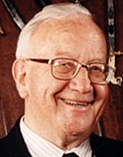
We conclude David Murray’s revealing history. Read earlier excerpts here. Of the picture above David writes, ‘Pipes and Drums of the 2nd Battalion King’s Own Scottish Borderers, Poona, India, 1909. The Pipes and Drums comprises Drum Major, Pipe Major and 19 pipers, one bass and 16 side drums [including tenors]. The battalion in India was kept up to full strength by drafts from the ‘home’ battalion. A typical pipe band in the marching days of Empire, although most would have had only two tenors and eight side drums. Note that all the drummers carry bugles. indicating that the pipe band is about to beat ‘Retreat’.
The increasing sophistication of civilian pipe bands and the standards of excellence they were reaching were to make the whole outlook personified by the ‘Army Manuals’ appear not only redundant but positively old-fashioned.
The old tunes and drum beatings had their place as long as the infantry marched in column of route to get from A to B but as World War 2 progressed these occasions became rare, and after it disappeared completely. The day of the marching band was over, never to return. In Europe, the increase in motor traffic made marching on the public road positively dangerous; and while there was plenty of marching overseas, it tended to be through the jungles of Malaya or over the mountains of Korea rather than along the straight dusty roads of India.
A different class of drummer was also being fostered in the world of the competing pipe bands. Not being marching bands in the military sense, they felt free to experiment and to break new ground. The tunes they played tended more and more to be chosen from the more difficult end of the repertoire. However, it was not until after the war that the influence of the civilian competing fraternity became a factor to consider especially after the National Service scheme got into its stride. Young, keen, and accomplished pipers and drummers were attracted to those regiments with a good pipe band reputation. But these drummers in particular, trained to the height of virtuosity taken for granted in civilian bands simply fell about laughing when confronted with the drum scores in the ‘Army Manual’. These were not only outdated but also redundant.
The impact of those young, dedicated and highly skilled pipe band drummers led to an immeasurable rise in drumming expertise in the military. It was not always welcomed. To senior regimental officers this syncopated drumming was ‘jazz’, with all the decadence and lowering of moral standards that the term implied for them. To the Drum Majors, brought up on the old beatings, this modern stuff was too clever by half. But it appealed to the drummers, and by the time National Service ended in 1962 the modern approach had superseded the old traditional style, in which the set beatings went with the time signature not the tune.
[wds id=”2″]
The 1960s saw the rope tension drums replaced by rod tension, not only in the Army, but also in the navy and the airforce. The rod tension drums looked well on parade when emblazoned with crests and battle honours in the same way as the older pattern. This went a long way to sweetening the pill as far as the older generation was concerned.
But now a strange reversal of role was beginning to occur. The civilian pipe band had been modelled to a great extent on those of the Army, but now, paradoxically, the reverse was more and more the case. Army pipe bands began to seek to emulate and surpass their civilian counterparts in playing skills, both in selecting more difficult tunes and in arranging their own drum beatings to accompany them. The more adventurous regiments began to think about challenging the civilians on their own soil, the competition field.
Senior officers were not too sure about this. It verged on the unthinkable that their pipe band should voluntarily lay itself open to being defeated by a bunch of civilians. The police pipe bands, being based on a disciplined structure not unlike that of an armed service, were different, but the thought of some of the others was a bit much. Still, the step was taken, and it was then that some appreciation of the depth of skill, knowledge, and dedication taken for granted in, say, a Grade 1 pipe band began to percolate through to the soldiers. The fact that this standard of excellence was achieved in the performers’ spare time and without any thought of remuneration either was something beyond the military experience.
So the position as we see it today is that the military tradition has been superseded by that of the pipe band movement. When a military Pipes and Drums beats ‘Retreat’, the medley selection has long replaced the old march, strathspey and reel, and march ‘set’. The drum fanfare has ousted the ‘Drummers Call’ and the crescendo rolls. The bugle call, which formerly opened the programme, is all but silent. It must be said that the military tradition has been thereby enhanced, sad as it is to see the disappearance of old customs.
But on the other hand, no civilian pipe band is without its Pipe Major and Drum Major, wearing the red sash and the four inverted chevrons of the old 1st Class Staff Sergeant and its Pipe and Drum Sergeants, with three stripes up and the red sash to boot. The full dress, in which a civilian pipe band is still expected to turn out on important occasions, is that of the Highland regiments, feather bonnet and all. Drummers in tartan trousers? Perish the thought. The Retreat march in 3/4 and especially 9/8 time, goes from strength to strength. The pipe band still drills to the old words of command and steps off with the three-pace roll, the last vestige, it is said, of the ancient ‘English March’. All square, wouldn’t you say?
[wds id=”3″]
















Recent Comments